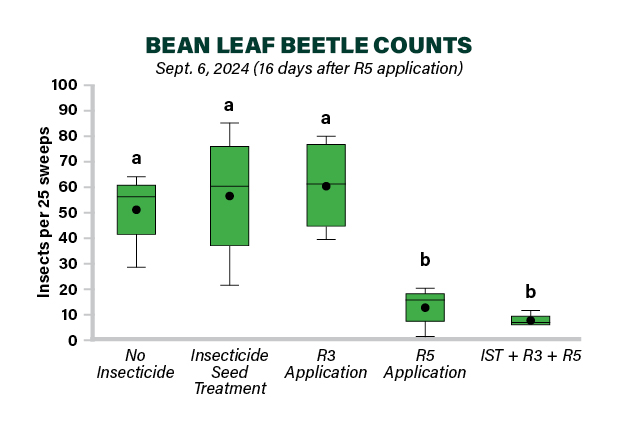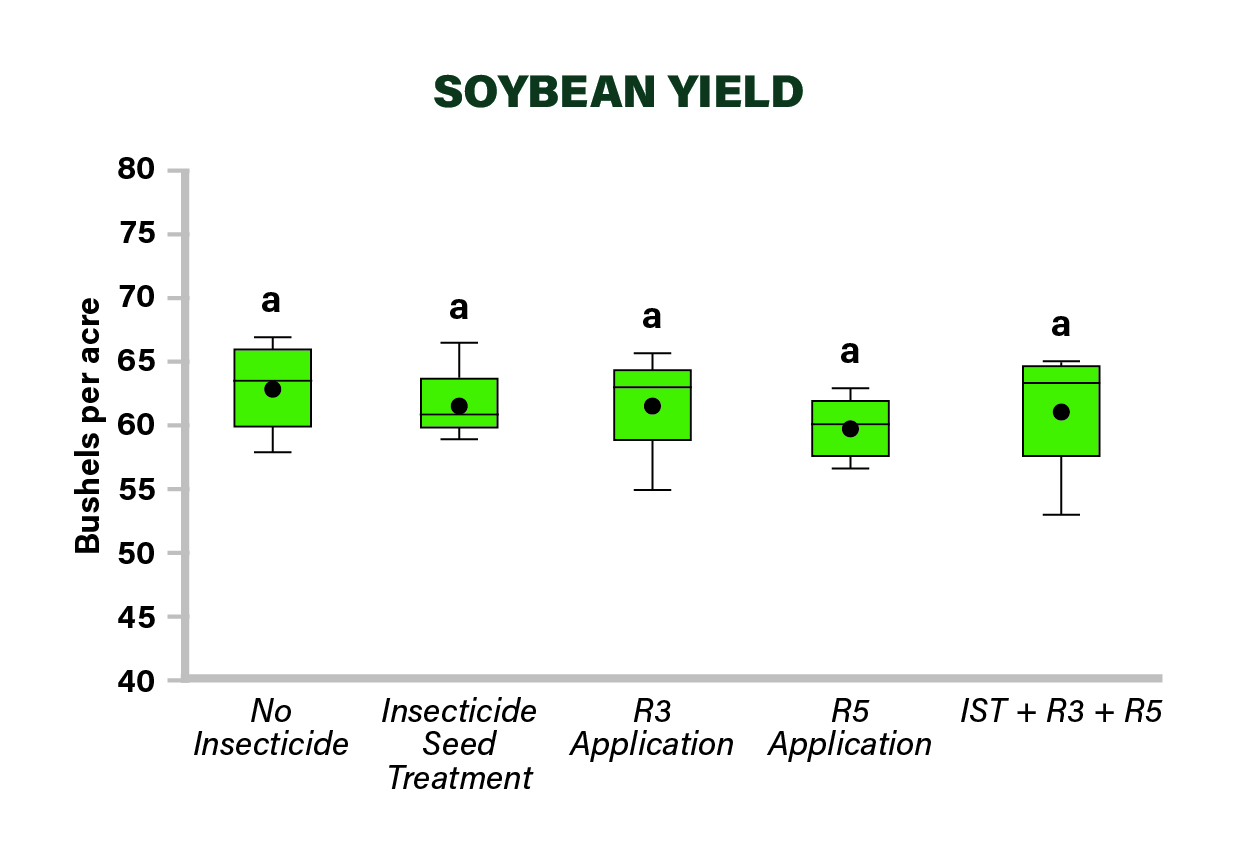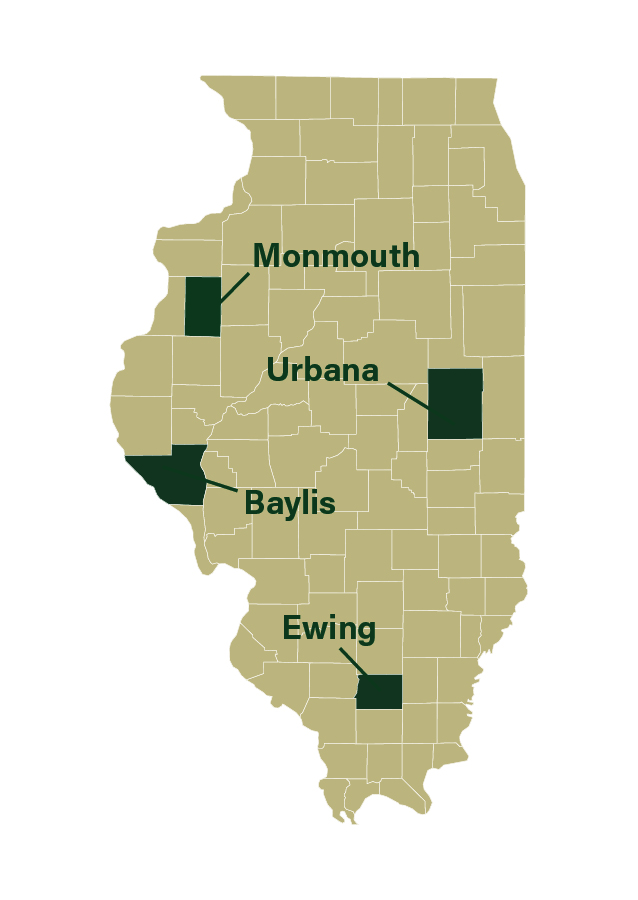Project Leader: Nick Seiter, University of Illinois
Purpose: University recommendations typically call for a threshold-based approach to insect management, but most insecticides are either applied to the seed or based on growth stage. Yield trials evaluating these approaches in soybean fields often lack detailed information on present insect pest populations, leaving uncertainty about why an insecticide may lead to a higher yield than untreated plots. This multi-year research project aims to help Illinois soybean farmers determine how often insecticides protect yield and identify the insect pests responsible.
Approach: The first year of research was conducted in 2024 on four university farms in Urbana, Monmouth, Perry, and Ewing. Researchers studied five treatments in soybean fields: no insecticide, insecticide seed treatment, insecticide applied at R3, insecticide applied at R5, and a combination of these three insecticide placements. Simplified versions of the experiment were also conducted on one commercial farm near Bluff City and one community college demonstration farm in Oglesby. At these locations, a single application at R5 was evaluated (this followed an initial application at R3 across the whole field on the commercial farm). Plots were sampled for stand loss and insect damage during the early vegetative stages, and insect populations were monitored throughout the season using a sweep net.
Results: 2024 was the first year of a multi-research project, so, farmers should be cautious about changing their practices based on a single year of data. In 2024, economic thresholds were not exceeded for an insect pest in any of the treatments at any site, and as expected the insecticide treatments did not provide any yield protection. First-year data aligned with current insect management recommendations to scout and treat for insect pests when they exceed an economic threshold. Over time, this research will help farms of all sizes determine how often insecticides provide a positive economic return.

Figure 1 shows the bean leaf beetle counts for the non-treated control and the four insecticide treatments. These treatments included an insecticide seed treatment (IST), foliar insecticides at R3 and at R5, and a combination of all three (IST + R3 + R5).

Figure 2 shows there was no yield difference across the five insecticide treatments despite the R5 Application and the IST + R3 + R5 treatment showing significantly less bean leaf beetles than the other treatments (see Figure 1).



 and then
and then